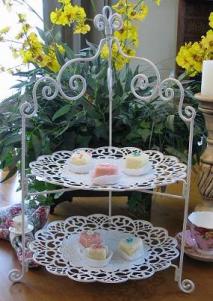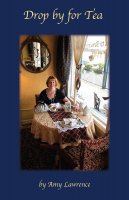Now that we’re in the “dog days” of August — so named for the ascending dog star, Sirius — everyone is asking the same important questions:
What’s the best way to make good iced tea?
And what tea/s make the best iced tea?

Well, it depends on who you ask.
Now if you ask me, I’ll tell you that the cold infusion method (also known as “refrigerator iced tea”) produces the tastiest and clearest iced tea you’ve ever tasted. Not to mention that it’s so-o-o-o easy to fix, you don’t have to worry about bacterial contamination (as you might when drinking “sun tea”), and as an added bonus it’s almost impossible for cold-infused tea to get bitter from over-steeping.
All you need are tea, disposable filters if you’re using loose leaf tea, a covered pitcher or large jar, and cold water. No need to boil the water — remember that I told you this was simple! It’s even safe enough for kids to fix.
 Here’s what you do: Put the tea into the pitcher or jar, fill with cold water, cover securely, and place into the refrigerator. (I personally favour using an empty “Simply Grapefruit” juice bottle — the wide mouth allows easy addition and removal of tea, and its convenient size fits on the ‘fridge door.) Let it steep for at least two (2) hours, or put it together in the late evening and let it steep overnight. When you’re ready to serve, remove and discard the tea (bags or filters), and pour into a glass in your favourite style: “as is,” over ice, with frozen strawberry “ice cubes,” mixed with lemonade, mixed with pineapple juice, accented with lemon and/or sweetener, or with a drop or two of pure vanilla … The possibilities are endless, limited only by your own taste buds.
Here’s what you do: Put the tea into the pitcher or jar, fill with cold water, cover securely, and place into the refrigerator. (I personally favour using an empty “Simply Grapefruit” juice bottle — the wide mouth allows easy addition and removal of tea, and its convenient size fits on the ‘fridge door.) Let it steep for at least two (2) hours, or put it together in the late evening and let it steep overnight. When you’re ready to serve, remove and discard the tea (bags or filters), and pour into a glass in your favourite style: “as is,” over ice, with frozen strawberry “ice cubes,” mixed with lemonade, mixed with pineapple juice, accented with lemon and/or sweetener, or with a drop or two of pure vanilla … The possibilities are endless, limited only by your own taste buds.
As far as which tea you should use for iced tea, a lot of people will tell you to “just ice whichever teas you drink hot.” The idea being, of course, that if you like the taste of a particular tea hot, logically you’ll love it just as much when it’s icy cold.
Well, I’m here to tell you: It ain’t necessarily so. Some teas are good no matter what temperature they are when you drink them, but a lot of teas simply are not switch-hitters.
 There are plenty of teas that I’m just crazy about when they’re served hot, but cannot abide when they’re cold. Case in point: smoky teas. The (tea) world is divided into those who hate smoky teas, and those who love a hot cup of Lapsang Souchong or Russian Caravan, especially on a damp, chilly afternoon. Happily, I’m in the latter group. So, following the “conventional wisdom” of iced tea preferences, I have on a couple of occasions tried an iced smoky tea. Never — I say never — again! “Yuck” would be the kindest description I could come up with to describe this swill. And yet, there I am at tea tastings, happily finishing off the almost-full pot of hot Lapsang Souchong while all around me are desperately trying to get rid of the “swill” in their cups.
There are plenty of teas that I’m just crazy about when they’re served hot, but cannot abide when they’re cold. Case in point: smoky teas. The (tea) world is divided into those who hate smoky teas, and those who love a hot cup of Lapsang Souchong or Russian Caravan, especially on a damp, chilly afternoon. Happily, I’m in the latter group. So, following the “conventional wisdom” of iced tea preferences, I have on a couple of occasions tried an iced smoky tea. Never — I say never — again! “Yuck” would be the kindest description I could come up with to describe this swill. And yet, there I am at tea tastings, happily finishing off the almost-full pot of hot Lapsang Souchong while all around me are desperately trying to get rid of the “swill” in their cups.
Several other very enjoyable hot teas just do not make it in iced teadom. Gen mai cha, a lovely gentle green tea mixed with roasted rice, is awful when chilled. Most white teas, when iced, simply leave me cold. As big a fan as I am of Darjeeling and oolong teas, frankly a lot of them can’t handle the transition from hot to cold. Matcha and gyokuro teas, two very strongly flavoured Japanese green teas, are wonderful hot but almost gag-inducing when cold. And let’s not even get started on pu-erh …
And then there are the teas I enjoy iced that I would never (or hardly ever) drink hot. Unless I were absolutely desperate, I’d never put a teabag of Wissotsky or Canadian Red Rose black tea into a teapot or cup and drink it hot, and yet these are my two favourite iced teas. Both have a clear, strong, “tea-y” flavour, and are great alone or for mixing with juices. I’m not real big on flavoured teas when they’re served hot, but chill ’em and pour ’em over ice and they are tasty and refreshing. There are also a few green teas that I find too grassy when they’re served hot, but when cold infused they develop a surprising springtime sweetness.
So how exactly do you choose which tea/s to drink iced? The same way you choose your hot tea favourites: drink a lot of different kinds, then winnow out the ones you don’t care for and stick with the ones you do like. Remember that it’s tea, not rocket science. You identify teas that appeal to your taste by sampling a variety. Whichever one/s you prefer become your own personal “best iced teas.”
 Yes, you’ve got to go with your own taste on this, but I will recommend one tea blend that I like both hot and cold as a jumping-off point. Start with either a neutral or “nectar/honey” type of Assam; it’s not as successful with “malty” Assams. (Orangajuli comes to mind, but there are plenty of others.) Then add a sprig or two of fresh dried linden leaves and flowers to the infusion. Linden is also called lime blossom; in French it’s tilleul, and in Romanian it’s tei.) I’ve been drinking this combination for some weeks now, ever since I bought and dried a kilo of fresh tei in Bucuresti. Everyone I’ve served this blend to so far — both in Romania and USA, where I managed to bring home about a half-pound of dried herb — has enjoyed the combination, both hot and iced. Linden has a lovely fragrance and a natural sweetness that complement a “basic black” tea like Assam.
Yes, you’ve got to go with your own taste on this, but I will recommend one tea blend that I like both hot and cold as a jumping-off point. Start with either a neutral or “nectar/honey” type of Assam; it’s not as successful with “malty” Assams. (Orangajuli comes to mind, but there are plenty of others.) Then add a sprig or two of fresh dried linden leaves and flowers to the infusion. Linden is also called lime blossom; in French it’s tilleul, and in Romanian it’s tei.) I’ve been drinking this combination for some weeks now, ever since I bought and dried a kilo of fresh tei in Bucuresti. Everyone I’ve served this blend to so far — both in Romania and USA, where I managed to bring home about a half-pound of dried herb — has enjoyed the combination, both hot and iced. Linden has a lovely fragrance and a natural sweetness that complement a “basic black” tea like Assam.
Follow us on Twitter at http://twitter.com/TeamailGroup and on our Twibe at http://www.twibes.com/group/Teamail.
Contact us about reviewing your tea-related product or service.
# # # #

